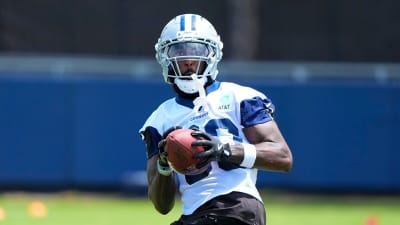Powder aims to feature only the best products and services. If you buy something via one of our links, we may earn a commission.
Since 2008, Mammoth Lakes, California-based professional skier and artist Chris Benchetler has been quietly revolutionizing powder skiing with his pro model ski, the Bent Chetler. Over the past 16 years, the skis have somewhat mirrored the evolution of both the industry and Benchetler’s personal skiing, but have always followed the same basic design principles: a massive twin-tip ski, with plenty of tip and tail rocker, a soft but poppy flex, and a nearly centered mount point. Oh yeah, and then there’s Benchetler’s intricately beautiful art that has adorned every top sheet since the original.
Newly updated for 2025, the Atomic Bent Chetler 120 isn’t much of a departure from the status quo, but with the introduction of the far more versatile Bent 110 in 2022, the new 120 trends back towards its roots as a backcountry freestyle powder ski that’s equally at home on a big booter and an Alaskan face.
The ski features a new lightweight Poplar core construction that uses significantly less metal, fiberglass, and resin to reduce environmental impact, HRZN 3D tips and tails for a signature surfy feel in pow, extended camber and added stiffness underfoot, and the classic twin-rocker shape. It’s still a Bent Chetler, after all.
Atomic Bent Chetler 120 Specs
- Lengths: 176, 184, 192 cm
- Sidecut: 140mm - 120mm - 134mm
- Radius: 19m (184cm)
- Profile: twin rocker with camber underfoot
- Weight: 1800g (184cm)
Shape, Flex and Construction
From far away, the 2025 Bent Chetler 120 looks like any old Bent Chetler. It’s still got the twin-rocker shape the ski first helped revolutionize in 2008, but the devil is in the details. Atomic has gone to great lengths to more sustainably produce their skis, and that has culminated in updated core constructions across the whole line, including most of the Bent series.
Diving into the shape, not much has changed from the previous version, which featured a similar turn radius and dimensions. Inside, however, that updated core construction makes the ski feel significantly stiffer than older versions. The tip and tail are still very soft and buttery, but the very stiff (we’d call it 8-9/10 stiff) underfoot section actually extends much closer to the tip and tail, contributing to a more powerful and stiffer feeling ski.
On-Snow Performance
Unsurprisingly, the Atomic Bent Chetler 120 is an excellent choice for skiing really deep, untracked snow, especially in the backcountry. It floats exceptionally well, feels both stable and surfy at higher speeds, and feels maneuverable through tighter terrain at slow speeds, despite its immense size. Chris Benchetler is one of the surfiest, most playful backcountry skiers out there, and his design philosophy really shines through here. No wonder that much of the rest of the Atomic team (skiers like Nick Mcnutt, Tim Durtschi, Kai Jones, Arianna Tricomi, Bobby Brown, and Dennis Ranalter) share that style.
The ski bounces around on pillows, slashes wind lips, and zippers through deep, steep tree runs exceptionally well. Get it in the air, and the light swing weight wants to shifty, spin, and style it out any chance it gets, before the stiffer construction provides a solid platform for stomped landings. It's the most fun in lower angle terrain that contains a lot of features where you can surf the tails, slash turns, and mess around in three-dimensional snow in between airs.
A note on mount point: this is one of the few skis we’d recommend going back a little from the recommended mount point. Unless you’re actually spending a lot of time skiing switch, the nearly true-center factory mount feels too far forward and causes tip dive at inopportune moments. Going back -2cm or -3cm from recommended remedies the problem. Chris Benchetler has shared that he feels similarly about the matter.
While it’s one of more fun skis to ride in the backcountry, on most resort days, the new Bent Chetler 120 feels like too much ski to handle. When things get choppy, the ski starts to get bucked around, with both tips and tails deflecting unpleasantly. While the ski feels like it can go as fast as you want in untracked snow, once the snow gets variable it's very much out of its element. Skiing at a place like Jackson Hole or Mammoth that can quickly get tracked out on powder days, I quickly found the speed limit when the fresh lines were gone.
The added stiffness and camber also contribute to a somewhat sluggish character on-piste, feeling like the ski doesn’t want to initiate a carve. Instead, it mostly wants to slarve and skid around on groomers. Interestingly enough, I found that its smaller cousins, the Bent 100 and Bent 110, have truly excellent performance on both hard snow and chopped up snow. Something’s missing there with the 120, but given its waist width and intentions, that’s fine by me.
Comparisons
There’s quite a few large freestyle-oriented powder skis out there for 2025, so I’d like to briefly compare the Bent Chetler 120 with three others, the blackcrows Nocta, the Line Bacon 122, and the Rossignol Sender Free 118. While all four skis feature similar waist widths and rocker profiles, there’s quite a bit to differentiate them. None of them make particularly good daily driver resort skis, unless you live in a place where you’re lucky enough to ski deep powder inbounds frequently. However, all four would be great choices to add into the quiver for those special mornings where it dumps a little more than expected.
Ranking them from most “playful” to most “serious,” it goes Bacon 122, Bent Chetler, Nocta, Sender Free 118. The Bacon 122 is extremely soft, floppy, and fun, but is a pretty specific tool for freestyle skiers who want to bounce around in deep, wet, and heavy snow and don’t care about speed or stability. Finally, the Sender Free 118 is a stiff, heavyweight bruiser that can charge through variable conditions, stomp huge cliffs, and would be right at home on a spine face in Haines, Alaska or on the Freeride World Tour, however it's not very forgiving and requires a lot of strength to really take advantage of. The Nocta is much more of a true powder freeride ski, and bridges the gap between the Bacon 122 and Sender Free 118. Despite the twin-tip shape, it feels more like a directional ski that encourages really fast and aggressive skiing in deep, light snow. It's light enough to be a dedicated powder touring ski, but with its longer 21-meter radius, the Nocta needs some physical space to play.
Finally, the Bent Chetler 120 seems like the most versatile of the bunch–while it trends towards behaving like more of a backcountry ski, it can definitely hang in the resort under the right kind of skier. I’d also say it’s the most purely “fun” out of the group, encouraging slashing that next wind lip, airing the next roller, and maybe landing backwards off that pillow drop you’ve been eyeing up all season.
What type of skier is the Atomic Bent Chetler 120 best for?
Twin-tip powder skis are kind of an interesting design proposition, and behave very differently in deep snow than a more traditional, directional shape. Typically, they allow a much more loose and surfy skiing style, promote a very centered stance, and of course permit landing and skiing backwards in powder. In other words, they’re not really for everyone, and that's fine. That said, I think there are three types of skiers who would love the new Bent Chetler 120.
The first type of skier who would like this is anyone chasing deep powder in the resort or in a mechanized backcountry setting that loves a more loose, playful ski (looking at you jibbers), and wants something that’s essentially a really fat freestyle ski. Outside the resort, it would be a blast to take these snowmobile, cat, or even heli skiing in mellower terrain, where you can focus on seeing the whole mountain as your own terrain park.
Second would be someone who actually sessions large backcountry booters regularly, and wants a ski that can hold up to big impacts, switch landings, and is light enough for big spins and bootpacking back up to the jump. That's a big part of what Chris Benchetler and the Atomic athlete team designed it to do.
Finally, the 1800-gram weight actually makes this a pretty reasonable choice for a backcountry touring ski for really deep pow days. Mount it with a pair of lightweight pin bindings and this would be a really fun ski for ripping around on low-angle terrain when the avalanche danger might prevent you from heading anywhere more interesting.
More must-reads:
- Veteran wideout announces retirement from NFL
- Jerry Jones addresses Taylor Swift possibly attending Chiefs-Cowboys game
- The 'MLB playoffs all-time hit leaders' quiz
Breaking News
Trending News
Customize Your Newsletter
 +
+
Get the latest news and rumors, customized to your favorite sports and teams. Emailed daily. Always free!








